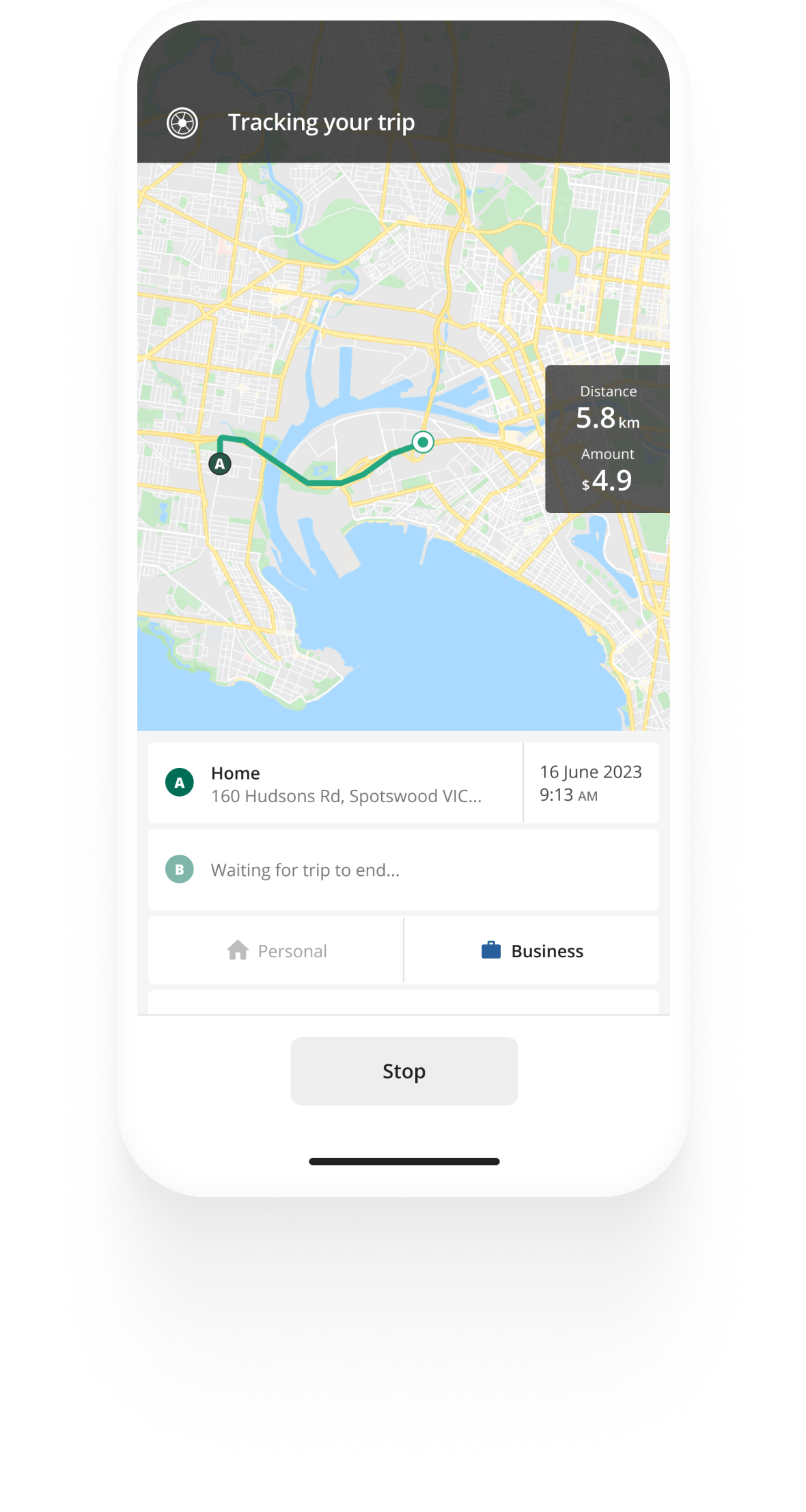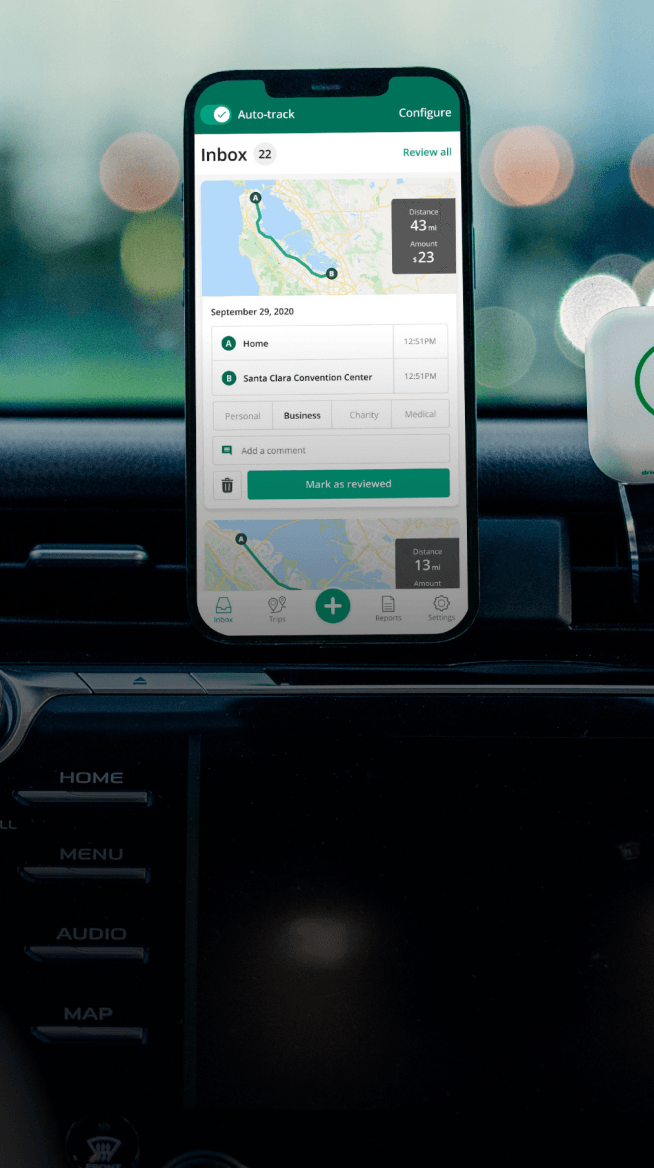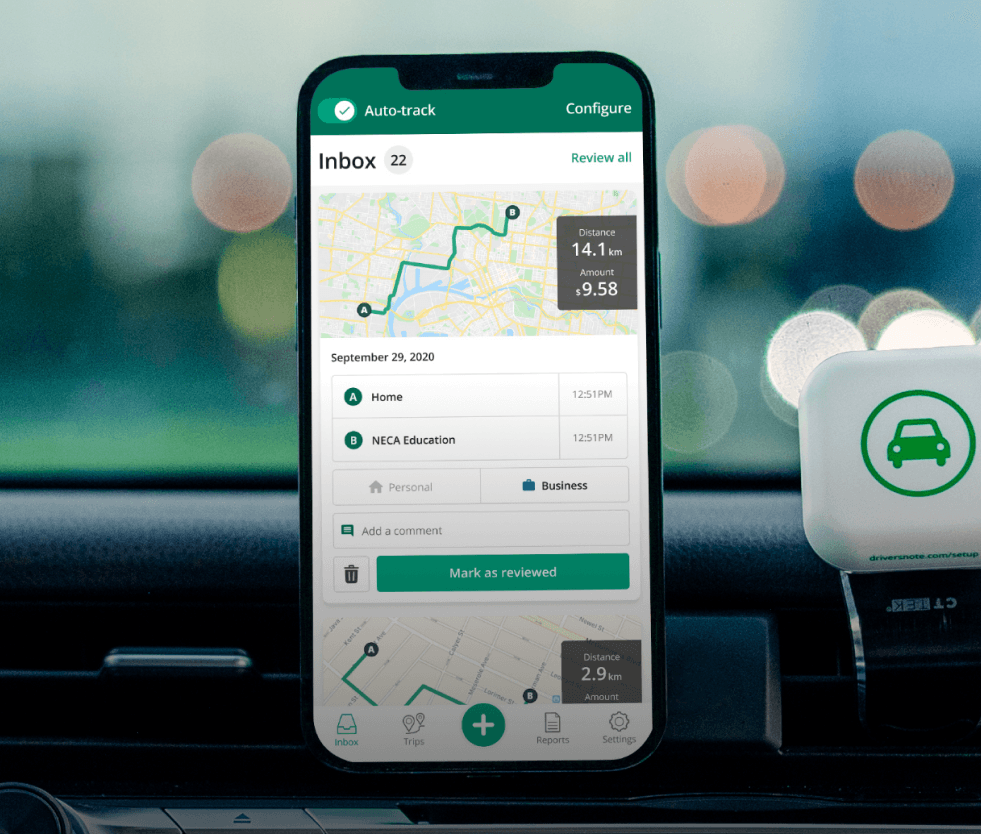Track mileage automatically
Get startedCar Fringe Benefits Tax (FBT)
Fringe benefits are non-monetary perks an employer provides to an employee on top of their wages or, in the case of a salary sacrifice arrangement – instead of a portion of wages. For example, when you provide a company car for the employee’s personal use.
But whether it’s in addition to wages or as a salary sacrifice, the provision of a company vehicle for personal use may be subject to Fringe Benefits Tax (FBT). As an employer, you are liable for paying this tax and lodging an FBT return to the ATO.
Read on for potential exceptions and methods of calculating FBT on a car.
When is a company car NOT a fringe benefit
The key term in deciding this is ‘personal use.’
A company car is not considered a fringe benefit if it’s solely meant to help the employee do their job.
Example: If the worker uses a company car only to run deliveries as part of their work duties and not for private use, then it wouldn’t be considered a fringe benefit.
Allowances that are provided as part of a salary package are also not fringe benefits.
Example: An employee gets paid a car allowance as part of their salary to reimburse them for the costs of using their own car in performing work duties. However, the employee may need to pay income tax on the allowance.
In addition, there are some vehicles that might be used outside of work by an employee but are exempt from FBT.


Kilometre tracking made easy
Trusted by millions of drivers
Automate your logbook Automate your logbook

Automatic mileage tracking and ATO-compliant reporting.
Get started for free Get started for freeCar FBT exemptions
Electric vehicles (EVs)
To encourage business owners to invest in low emissions vehicles, the government has made certain EVs exempt from FBT.
To be eligible for an exemption, the car must meet several conditions. It’s required that the vehicle:
- Was held and used on or after 1 July 2022
- Is a low or zero emissions vehicle
- Has a value of less than $91,387, including GST (the threshold for fuel-efficient vehicles for 2024-25)
- Is used by a current employee (or their associates, such as family members)
- Never had luxury car tax (LCT) paid on it when importing or selling
Certain other expenses for an eligible vehicle are exempt as well – e.g., registration, insurance, and maintenance.
For more details and to work out if your EV could be exempt, read the EV FBT exemption article.
Other exempt vehicles
Some combustion engine vehicles may also be exempt from FBT.
These include:
- Single cab utes
- Dual cab utes or 4WDs that carry more than 1 tonne or more than 8 passengers
- Panel vans or goods vans
- Modified vehicles, such as a hearse
- Taxis
How the employee uses the vehicle comes into the equation as well. Refer to the page on cars exempt from FBT for more detail and examples of exempt models.
Plug-in hybrid electric vehicles (PHEVs) are not exempt from FBT
As of April 2025, plug-in hybrid electric vehicles are no longer considered low or zero emissions vehicles under the FBT law.
FBT and car parking
Some employers provide employees with a car parking fringe benefit. In this case, they need to be aware of the rules regarding fringe benefits tax for car parking.
A parking space may be considered a fringe benefit if:
- The employer owns, leases, or controls the business premises
- The space is close to the workplace
- The car park is within 1km of a commercial car park that charges an all-day parking fee that is greater than the current year’s car parking threshold (see the ATO website for the current limits)
- The car is parked in the spot for more than 4 hours a day between 7 am and 7 pm, by an employee who drives between home and work, and
- The employer is not exempt from FBT.
Car parking FBT exemptions
FBT exemptions may apply in certain circumstances, such as when:
- The employee has a disability (for the exemption to apply, the employee must have either a valid accessibility parking permit displayed or be legally entitled to use an accessibility-marked parking bay)
- The enterprise is a small business (gross total income below $10 million) and the car park provided is non-commercial and/or
- The enterprise is a registered not-for-profit organisation, a non-profit scientific institution, a public educational institution, a public hospital, or an ambulance service.
The FBT rate and how it’s calculated
The current FBT rate for a car fringe benefit is set at 47% until March 2026.
However, the dollar amount due depends on a range of factors, such as:
- The value of the vehicle
- The degree of personal use
- Potential employee contributions
- The value of non-business modifications
- Whether or not the business is GST-registered.
FBT gross-up rates
The fringe benefit value also has to be ‘grossed up.’ The gross-up factor is designed to prevent employers from claiming a GST credit for private use of cars by employees.
The current gross-up rate (valid until March 2026) for a GST-registered business is 2.0802. If your business is not entitled to claim GST credits, the rate is 1.8868.
Methods for calculating car FBT
You can use one of the two methods to calculate the FBT on a car.
Note: You don’t need to use the same method every FBT year– it can be changed from one year to the next.
The statutory formula method
The statutory formula method applies a fixed percentage (20%) based on the car's value.
To calculate, you apply:
A: The car’s base value
B: The 20% statutory percentage
C: Amount of days the car was made available to the employee for private use
D: Number of days in an FBT year (365/366 if it’s a leap year)
E: Any employee contribution
Formula for calculating the taxable value: (A × B × C ÷ D) − E.
Example
Let’s consider the following scenario using the statutory method:
- You provided a car for an employee to use with a value of $45,000 (including GST).
- There were 215 days in the FBT year (365 days) when the car was available to the employee.
- The employee contribution is $500.
FBT liability for the car: (45000 x 0,20 x 215 / 365) - 500 = $4801,37
Manually calculating FBT on a car can be quite a complex process, but a car fringe benefits tax calculator can make it easier. If you are an employer, you can use the ATO online calculator to get an estimate on the FBT amount due.
Keep in mind that the above examples are just a preliminary estimate and should be verified by a tax professional.
Operating cost method
The operating cost method can be used where detailed vehicle use records have been maintained.
You will need to know the total operating costs, the percentage of private use, and the employee contribution. To determine the private use of the car, employees must provide accurate vehicle logbooks and odometer readings.
Automate your recordkeeping with a digital vehicle logbook
A great tool for simplified recordkeeping across your team is a vehicle logbook app like Driversnote.
Driversnote tracks kilometres automatically, generates standardised reports, and cuts down time spent on admin tasks significantly.
Dates for lodging an FBT return to the ATO
The FBT year differs from the financial year in that it runs from 1 April to 31 March of the following year, with the FBT due for lodging and payment on 21 May of that year.
However, if the due date falls on a weekend or a public holiday, the payment will be due the next business day.
FAQ

Tired of logging mileage by hand?
Effortless. ATO-compliant. Liberating.
ATO Mileage Guide
- For Self-Employed
- For Employees
- For Employers
- The Cents per Kilometre Method
- The Logbook Method
- ATO Log Book Requirements
- Claim Car Expenses In 5 Simple Steps
- Calculate Your Car Expenses Reimbursement
- ATO Car Expenses Deductions
- Car Fringe Benefits Tax
- Is Mileage Reimbursement Taxed?
- Historic Cents Per KM Rates
- ATO Cents Per KM Rate 2021/2022
- ATO Cents Per KM Rate 2020/2021